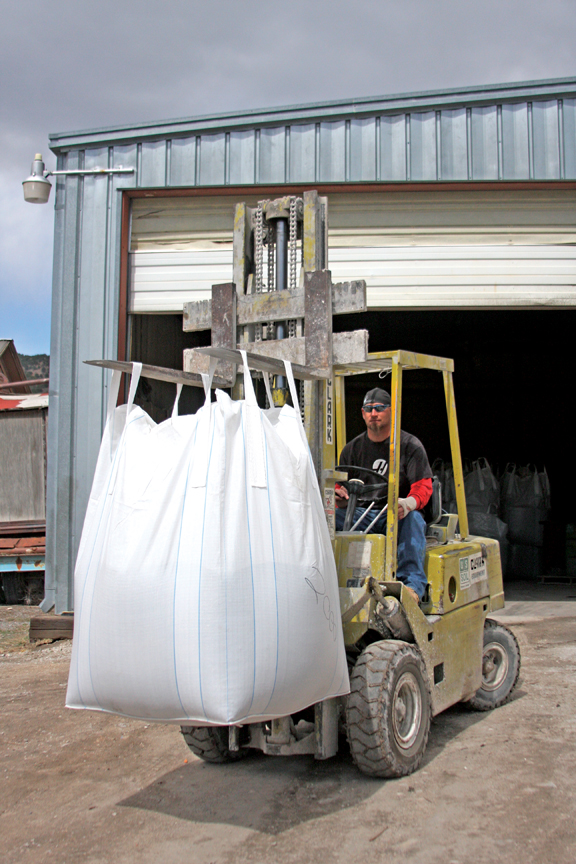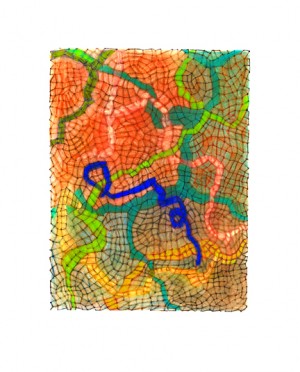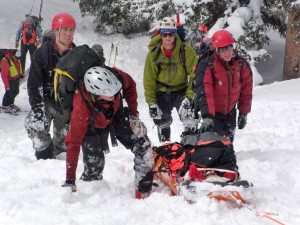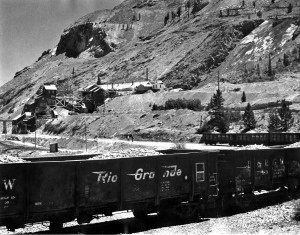by Ron Sering
photos by Mike Rosso
When Emil Lionelle pulled the odd little rock out of a deposit of Rocky Mountain granite, he only knew it was interesting. But the Lionelles knew a thing or two about stone. The Lionelle family originally came to the area in 1868 as stonemasons for the railroad, and Emil had put two children through college during the Depression by ranching, farming, and mining.
The mysterious stone eventually found its way into a tomato pot. And that’s when the apparent magic happened. The plant flourished, and soon the Lionelles were out gathering as much of the mineral as they could find. Eventually, they found an entire deposit. And US Soil was born.
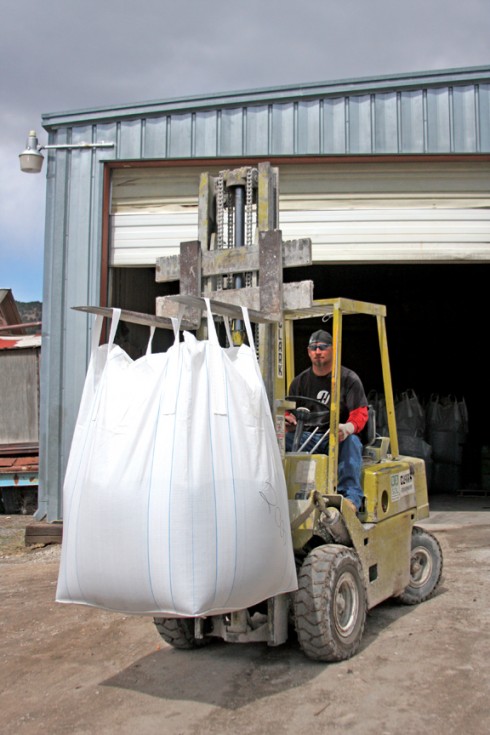
Mining meets up with sustainable agriculture at US Soil’s processing facility east of Salida on US Highway 50, in sparsely-populated Wellsville. A short drive east into the foothills bring us to the deposit.
“What you’re looking at,” said Albert Lionelle, who along with brother Joe and father Joseph E., operates US Soil, “is an ancient freshwater lake bed.”
The Planters II deposit is the result of a unique combination of geological factors. Over vast periods of time, the lake dried up, and the geologic shift that formed the modern Rockies covered the ancient lake bed, sealing the sediment layer in granite.
“And then the hot springs cooked it,” Albert said. The entire area contains some of the most abundant geothermal resources in the country. The result was a giant crock pot that broke down and combined the minerals to make Planters Trace Mineral Fertilizer.
By the late 50s, they marketed the product as a natural fertilizer when “better living through chemistry” was the norm. All minerals in the Planters Deposit “are plant available.” Albert said. “The plants can feed on it immediately.”
“The key to sustainable agriculture,” Albert said, “is to get your soil working for you. Albert stressed that the minerals feed the soil at the microbial level and make the soil more fertile. A typical corn crop using chemical fertilizers can actually remove 200 pounds of minerals from the land. The result is further applications of chemicals, just to keep pace.
Rich in a dizzying range of important nutrients, Planters II Foundation Mineral Fertilizer is certified for organic farming and gardening by the Organic Materials Review Institute. Lab tests show that the mineral is 30% water soluble within the first hour of application. The remainder becomes gradually soluble throughout the growing season.
Over the years, the Lionelles searched for deposits similar to Planters, but found nothing comparable. “Even when the chemical analysis is similar, it’s not the same,” said Joe.
The deposit’s incredible water-solubility makes it both an effective fertilizer, and problematic to mine. “We mine and store the ore during dry times,” Albert said. “And we have to keep it contained. If it gets wet, it’s waste for us.”
Local contractors remove the ore from the deposit during dry weather and transport it to a large A-frame storage enclosure that protects it from both water and winds. From there, it is transported to their processing plant, where it is converted into granular form.
The product was originally produced as a powder, but “powder creates a lot of blowback issues,” Albert said. After much experimentation, the Lionelles developed a chemical-free method to granulate the mineral for use in commercial spreading equipment.
The ore is transported down the hill to the production facility where it is loaded into a hopper. Inside the facility, the mineral is fed into a massive milling machine, which breaks it down and adds the magic ingredient, molasses, to cause the mineral to clump into granules. In addition the molasses add still more nutrients to the fertilizer.
Towering above it all is a massive vacuum system that gathers the resulting dust for reprocessing. The facility is automated. “One person can run the facility,” Albert said.
The finished product is commonly stored and shipped in forklift-friendly “totes,” that look like huge polypropylene shopping bags, each holding a ton of material. “The farmers prefer it that way,” Albert said.
Albert estimates the total remaining deposit at 1.8 million tons, with potential for more. “That’s a pretty average deposit for a mine,” Joe said.
Reclamation work is ongoing, unlike many other mining operations. “Our family philosophy is that we don’t move a tree unless you have to move a tree. We have to be good stewards of the land.”
Currently US Soil sells most of their product in the Midwest. “We just started working with Amish farmers in Iowa,” Albert said. “They’re great to work with.”
Locally, their product can be purchased from Weathervane Farms in Buena Vista.
“We sell our product from Washington State to Long Island,” Albert said. “A lot of our work with farmers is educational, about sustainability. The question is, what kind of legacy to you want to leave to your grandchildren?”
Ron Sering live in the Howard metro region with his wife, the artist Christine Marie Davis. His work has appeared in publications as diverse as Inside Ecuador and Cemetery Dance. His Website is www.ronsering.com
